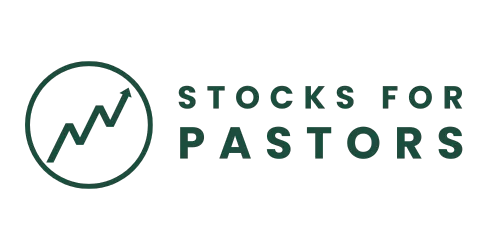A practical, pastor-friendly system for creating real cashflow from the market.
Build a trading business that pays you monthly, without stepping away from ministry

You Don’t Need Another Job. You Need a Paycheck That Works on Your Terms.
You’ve probably heard it before:
“Start a side hustle.”
“Pick up some extra speaking gigs.”
“Drive for Uber in your free time.”
But deep down, you know the truth: Your time is already maxed out.
What you need is margin. Not more hustle.
What If You Could Run a Simple, Part-Time Trading Business From Your Laptop?
The Income Plan is a complete system designed to help entrepreneurial-minded pastors create withdrawable income every month using options trading.
It’s not a hobby. It’s not guesswork.
It’s a repeatable process to build a lean, flexible business that pays like a second job—without pulling you away from your first calling.

You’ll know exactly what to do, when to do it, and how to manage it.
How It Works
This isn’t “set it and forget it” investing. This is business building, with tools, structure, and strategy.
Learn three simple strategies that power our 5–10% monthly ROI targets
Receive weekly trade alerts you can copy in minutes
Watch your account generate consistent monthly cashflow
Withdraw profits just like a paycheck
Grow your skills, build confidence, and scale at your pace
What's Included
When you join the Income Plan, you get full access to:
The Options Business Course:
Learn the full framework behind this income-generating model. Taught in clear, practical lessons.
Real-Time Trade Alerts:
Follow Michael’s actual trades each week. Know what to trade, when, and why.
Monthly Coaching Calls:
Get feedback, troubleshoot your trades, and grow with a like-minded community.
Templates & Checklists:
Run your trading like a system, not a guessing game.
Supportive Private Group:
Be part of a network of pastors and ministry leaders building the same kind of freedom you are.
Receive a $100 Bonus:
When you open your trading account with our preferred partner, you'll get a "thank you" gift deposited into your account.
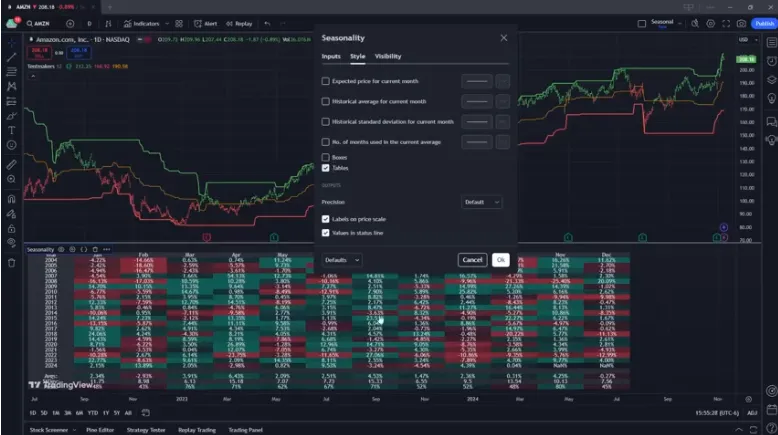
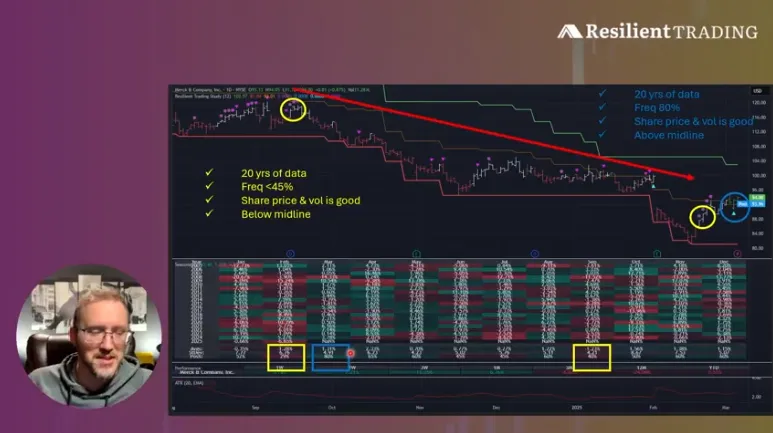
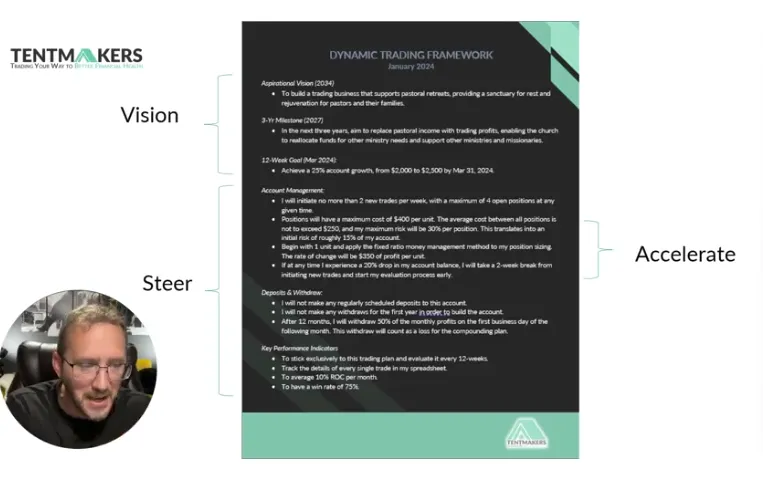
Real Results. Real Income.
This isn’t theory. These are actual results.
Since launching the Income Plan in April 2023, Michael has placed 221 trades with a 79.6% win rate, using the same strategy shared in this program.
Started the portfolio in April 2023 with a $2,000 account.
Earned $11,437 in profit over 24 months!
Average Monthly ROI: 5.9%!
Average Monthly Income: $477!
Only 2 Losing Months: 91.7% winning months!
That’s not flashy day trading. That’s consistent, repeatable income—built with focus, discipline, and a strategy that works.
If a $2,000 account can generate nearly $12K in profit in two years, imagine what this could mean for your family, your ministry, or your financial peace of mind.

Here's the Best Part!
✅ You can do this in under an hour each week from a mobile device, wherever you are!
✅ You’ll never trade alone!
✅ You’ll always have a plan to follow!
PRICING
Choose Your Plan
Monthly
$197/m
Basics and Growth Plan included
Full access to the Options Business Course
Three high probability trading strategies to set you up for success in any market condition
Real-time trade alerts to follow step-by-step
Monthly group coaching calls for Q&A and support
Access to our members-only community
Downloadable checklists, templates, and guides
Ongoing support & updates
Get 2 months free with Yearly Plan
2 Free 1:1 coaching sessions with Michael

No contracts - cancel anytime
Annually (Best Value)
$1,997/yr
Basics and Growth Plan included
Full access to the Options Business Course
Three high probability trading strategies to set you up for success in any market condition
Real-time trade alerts to follow step-by-step
Monthly group coaching calls for Q&A and support
Access to our members-only community
Downloadable checklists, templates, and guides
Ongoing support & updates
Get 2 months free with Yearly Plan
2 Free 1:1 coaching sessions with Michael

No contracts - cancel anytime
For Pastors Who Think Like Entrepreneurs

Wants to provide more for your family without overextending your time
Believes financial margin creates ministry freedom
Is ready to treat income generation with the same intentionality as discipleship
Doesn’t want hype, just a method that works
Is willing to learn, apply, and grow
You're not just looking to invest.
You're looking to build something that gives back.
What Members are saying

“I can't tell you how awesome it felt to close my first winning trade! Knowing that when I clicked that button, I would be able to use that profit for a much needed date night with my wife. Thank you!”
Jon. H.

“I've been doing pretty good with the stocks plan, but learning how to trade options has taken things to a whole new level.”
Kyle C.

“This has been exactly the kind of side-hustle I was looking for. I needed someone I could trust to teach me how to get more time back and stop doing side gigs that take hours of my time and eat away at my ministry focus. Plus, I make more money with this. A double win!"
Ben C.
Imagine This...
What if you could earn an extra 5–10% every month from your trading account?
Not once in a while. Not someday. But consistently. Month after month. What would you do with that extra income? How would it change the way you care for your family? What would it free you from mentally, emotionally, even spiritually?
Maybe you'd finally take your spouse on that getaway.
Maybe you'd cover an unexpected bill without fear.
Maybe you'd support a missionary or fund a ministry dream that’s been on your heart for years.
Maybe you'd stop feeling like you're behind.
This isn’t about chasing riches. It’s about creating margin so you can serve God and others with peace and confidence.
Let’s build that future together!
Read Our Latest Blogs
Lorem ipsum dolor sit amet, consectetur adipiscing elit.
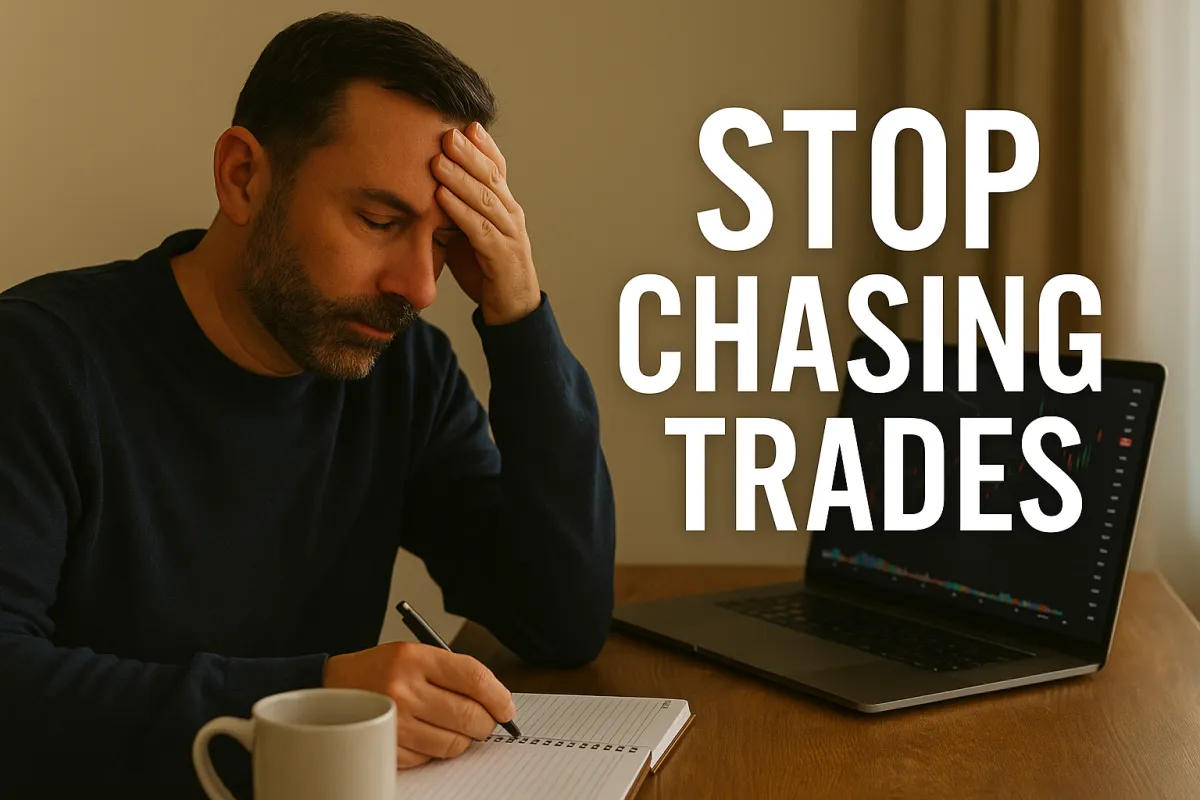
Chasing Trades: How to Spot and Stop It
If you ask most traders why they lose money, they will point to bad stock picks or a poor market. The truth is much simpler and far more universal. Most losses come not from bad research, but from one common mistake: chasing trades. I have made this mistake more times than I care to admit. I can still remember the feeling of watching a stock I “knew” was about to move, seeing it break out without me, and then jumping in, only to buy the top and watch my money evaporate. If you have ever felt that sting, this article is for you.
Today, I want to show you exactly what chasing looks like, why it happens to even the smartest investors, and how you can break free from the cycle. This is not just about protecting your account. It is about building the patience and confidence you need to trade with peace of mind.
What Does “Chasing a Trade” Actually Mean?
Chasing a trade is getting in after the real opportunity has passed. It is what happens when you let FOMO (fear of missing out) override your process and rules. Instead of waiting for your setup, you jump into a stock that is already making a big move. You rationalize it. You convince yourself that “this time will be different.” In reality, you are buying into a move that others started earlier, and the odds are now stacked against you.
Some signs you are chasing:
You buy after a breakout already ran several percent.
You increase your trade size to “catch up” on missed profits.
You enter a trade after seeing it on social media or from an alert, long after the original signal.
You ignore your own entry criteria just to get in.
The emotional drivers are always the same: anxiety, regret, greed. The urge to “not miss out” can be overwhelming, but it is also the quickest way to sabotage your results.
The Real Cost of Chasing
Why is chasing so destructive? The answer is simple. When you buy after a big move, you are getting a worse price than the disciplined traders who entered earlier. That means your risk is higher, your odds of profit are lower, and your stress skyrockets. Instead of being in control, you are now hoping that the move continues, often with little evidence to support it.
Let’s put numbers to it. Imagine a stock you are watching breaks out from $50 to $53, and you finally decide to buy at $53, hoping to catch the momentum. The original setup called for entry at $50, with a target of $55 and a stop at $48. If you buy at $53, your upside is now just $2 per share, but your risk is $5 per share if the trade reverses. Your risk-reward has flipped against you, and the odds are no longer in your favor.
Even worse, this cycle erodes your mindset. Every time you chase and lose, your confidence takes a hit. You start second-guessing your plan and reacting to every move. Chasing trades is a silent account killer. It is not obvious until you look back and see how much money you gave away one impulse at a time.
How to Recognize When You’re Chasing
The first step to fixing this problem is being honest with yourself. Most traders know, deep down, when they are chasing. Here are the red flags to watch for in your behavior and thinking:
Urgency: You feel rushed, pressured, or afraid you will “miss out” if you do not act immediately.
Rationalizing: You start making excuses for breaking your rules. “It still has room to run,” or “Maybe this time will be different.”
Rule Ignoring: You enter a trade without waiting for your normal confirmation or setup.
Size Creep: You add more size than planned because you are “making up for lost time.”
Hunting for Validation: You scroll social media, chat rooms, or news looking for reasons to justify a late entry.
Ask yourself these self-check questions before every trade:
Am I entering because my setup triggered, or just because I do not want to miss out?
Did I plan this trade, or am I reacting to a move I did not expect?
Is my risk-reward still favorable, or am I stretching just to get in?
If you answer “yes” to any of the above, you are likely chasing and it is time to pause.
Why Do We Chase? (The Psychology Behind It)
You are not alone if you struggle to break this habit. Chasing is a deeply human reaction, and our brains are hard-wired for it. Here is what is really going on under the surface:
FOMO: Seeing a move happen without you triggers a real fear that you are missing out on success or falling behind others.
Comparison: When other traders share their wins, or you see a hot stock on social media, the pressure to “keep up” can overpower your better judgment.
Impatience: Waiting for the perfect setup feels slow and boring. Chasing offers a shot of excitement and hope.
Regret Avoidance: Missing a move feels like a personal failure, so you try to make up for it by entering late, even though you know it rarely works.
Social Media and Alerts: Real-time alerts, Discord rooms, and endless headlines are engineered to create urgency. They make it feel like every opportunity is slipping away unless you jump in right now.
I am not immune to any of this. My biggest losses almost always followed a moment where I abandoned my plan, convinced myself I “could not let this one go,” and clicked the buy button without a real setup. That urge never fully goes away, but learning to see it for what it is makes it much easier to manage.
Practical Steps to Stop Chasing Trades
You cannot eliminate the urge to chase, but you can put barriers in place to protect yourself. Here is how I do it and how you can too:
The “Pause and Plan” Technique
Whenever you feel the urge to jump into a trade, force yourself to pause for two minutes.
During this pause, ask yourself: “Is this my setup, or am I just reacting?”
Write down the reason for the trade. If you cannot articulate a clear setup and risk-reward, do not enter.
Use Watchlists and Alerts
Set alerts for your planned entry levels. Only act when the alert triggers, not because of what you see in the moment.
Have a pre-planned watchlist and trade criteria for the week. This gives you a framework to stick to and removes the need to chase whatever is hot right now.
Keep a Trade Journal
Track every trade you take, along with a note about why you entered. Review your trades weekly to spot patterns where you chased or broke your rules.
If you see multiple “chasing” trades in a row, step back and reassess your process.
Accountability
Share your trade plan or weekly summary with a trading partner or community. Knowing someone else will see your decisions makes you more likely to stay disciplined.
If you do not have a community, even posting your plan in a private document can help you slow down and reflect.
Celebrate Patience
Whenever you skip a trade because it did not fit your setup, celebrate that decision. It is a win. Over time, this re-wires your brain to see discipline as a source of pride, not just missed opportunity.
The Reward: Becoming a Patient, Intentional Trader
What happens when you finally stop chasing trades? Your win rate improves, your drawdowns shrink, and your stress level goes way down. But the biggest change is in your mindset. You move from a place of fear and reaction to a place of confidence and control.
You will start to notice that waiting for your best setups, even if it means missing a few moves, actually leads to better results and more peace of mind. The market is not going anywhere. Opportunities will keep coming. The trader who waits, plans, and executes with discipline is always the one who lasts.
If you want to level up your trading, this is where it starts. Patient, intentional traders are the ones who win over the long haul, not the ones chasing every shiny object.
Challenge and Next Steps
This week, I challenge you to track your next five trades. After each one, ask yourself: Did I chase this trade, or did I wait for my setup? If you notice any chasing behavior, pause and review your process before your next trade.
If you are serious about breaking the cycle and want a repeatable framework for spotting high-quality setups (so you never feel the urge to chase again), check out my free Beginner’s Guide to Seasonal Investing.
Let’s trade with patience and purpose, one decision at a time.
